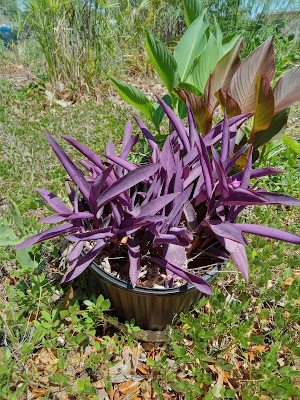Tradescantia pallida, also known as Purple Heart, is a beautiful and versatile plant that can be grown both indoors and outdoors. It is native to Mexico and has a trailing habit, making it perfect for potted planters or ground cover. Tradescantia pallida is also relatively easy to care for, making it a great choice for beginner plant owners.
Description
Tradescantia pallida is a perennial plant that grows to be about 6 inches tall. It has thick, fleshy stems that are covered in purple leaves. The leaves are oval-shaped and have a pointed tip. Tradescantia pallida produces small, pink flowers in the summer.
Cultivation
Tradescantia pallida is relatively easy to care for. It prefers full sun or partial shade and well-drained soil. Tradescantia pallida can be grown outdoors in USDA zones 9-11. In colder climates, it can be grown indoors as a houseplant.
To water Tradescantia pallida, water the soil deeply when the top inch of the soil is dry. Tradescantia pallida does not need to be fertilized often. However, you can fertilize it with a balanced fertilizer once a month during the growing season.
Prpagation
Tradescantia pallida can be easily propagated from stem cuttings or from divisions. To propagate from stem cuttings, take cuttings that are about 4 inches long and remove the bottom leaves. Dip the cuttings in rooting hormone and plant them in well-drained soil. To propagate from divisions, simply divide the plant into two or more pieces.
Benefits
There are many benefits to growing Tradescantia pallida. It is a beautiful plant that can add color to your garden or home. Tradescantia pallida is also relatively easy to care for, making it a great choice for beginner plant owners. It is edible to rabbits and ducks. Additionally, Tradescantia pallida is a versatile plant that can be used in a variety of ways. It can be used as a ground cover, in hanging baskets, or even as a houseplant.
Problems
Tradescantia pallida is susceptible to a few pests and diseases. Aphids, mealybugs, and scale insects can all damage the plant. Additionally, Tradescantia pallida can be susceptible to root rot if the soil is too wet.
Conclusion
Tradescantia pallida is a beautiful and versatile plant that is easy to care for. It can be grown both indoors and outdoors and has a variety of uses. If you are looking for a plant that is both beautiful and easy to care for, Tradescantia pallida is a great option.












































